

Travel planning
Travel agents and package dealers are fine if you want to follow the crowds and end up in the usual hotels, tourist districts and restaurants, but if you prefer to be a traveler and not so much of a tourist you have to do the research. As a photo journalist I’ve had to do this most of my life, arriving somewhere and just knowing what the travel industry offers has never been enough.
So where do you start?
Travel... getting there. Air travel can be tricky, booking a long way in advance gives you the best option usually but you need to check on pricing every day. Price alerts might help but they just give you the lowest fare, often with the worst connections and times. The lowest fare is not what you want, unless you’re on a tight budget. You will also find the low fare can almost double if you want a decent seat and travel time with a maximum of one stop. And remember...Just one carry on... get on and off flights quickly, take public transport. Too much baggage slows you down and if you pack carefully one bag is all you need. Time to research.
Ground travel
Here we cover Spain and the only way to go is by public transport. High speed intercity trains are faster than any air travel. There are fast frequent regional trains and busses to smaller towns. You can purchase high speed train tickets online but the official website, Renfe, can be a little flakey at times so you might have to purchase through an agency. Trains leave ever hour or so with prices lower during off peak times.
Accommodation
If you do some research you can often find small locally operated hotels, less expensive and away from noisy tourist centres. Look in neighborhoods within walking distance of the action, they often offer a good selection of local cafés and markets. A little Spanish and you have a chance to hang out with the locals. Apartments also offer these options, with restrictions on rentals in tourist centres the availability is more limited currently.
Finding out more
Look at maps to see areas close to city centres that might be places to stay, often searching the neighborhood provide sites with history and other information. Search restaurants in the area, go to their websites. Take a tour with Google Streetview, this will give you a feeling for the place. Keep digging, there’s heaps of information out there.
Check MASS TOURISM, avoiding the crowds
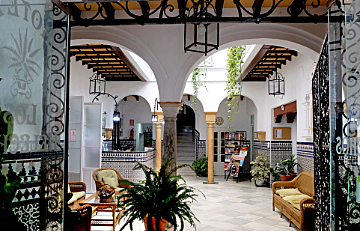
Small local hotels can be found everywhere.

Life in local neighborhoods can be more interesting than staying in tourist districts.
We have been annual visitors to Madrid and Andalucia,the Southern region of Spain for over ten years, taking photographs and just knocking around the old neighborhoods and some of the new…rubbing cañas (beers) with the locals and eating in places never mentioned in the guidebooks.
Most tourists wouldn't think of going to the same old destination every year but if you really get to know a place you start feeling less like a tourist, more like a local. Many books have been written, and movies made about travelers who went local; in Spain it was Hemingway, Orson Wells and others… becoming part of the local landscape, living the dream.
This website, a type of online coffee table book, takes viewers to places we visit regularly, to funky little hotels and cafés, grand monuments and surprise fiestas. If travels your thing start here and avoid being a tourist.
Don't take this all in at once, grab a glass of wine and browse when you feel like a quiet relaxing moment.
TRAVELING IN SPAIN…
The options, renting a car or using public transport
If you plan to stay outside cities, perhaps a golfing tour or travel to scenic areas and national parks, public transport is your best choice. While a car gives you more freedom on the open highway if you prefer to stay in city centres where the action is you'll soon find navigating narrow congested streets frustrating. Parking can be hard to find and expensive. High speed trains link most major cities and urban trains link local areas. Buses are also a good option for shorter trips where there's no train service.
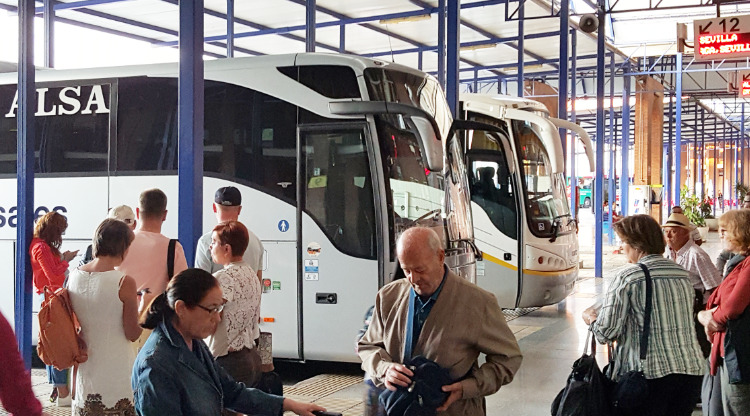
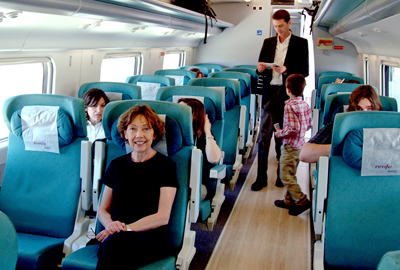 Trains
Trains
Fast, comfortable, frequent and inexpensive. Renfe, the national rail network, has a website offering online booking and Early Bird specials. They also offer senior passes, 62 and over, with up to 40% discounts. CLICK for more.
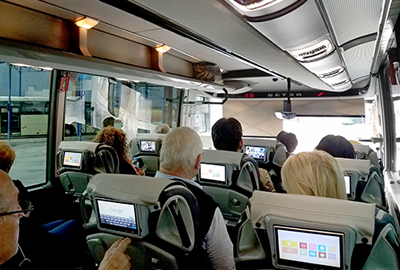 Buses
Buses
Buses leave from city terminals for all parts of Spain and beyond to most cities in Europe. Regional buses are your best choice for travel to small towns not serviced by trains. Usually you'll find they leave every hour or so during peak times
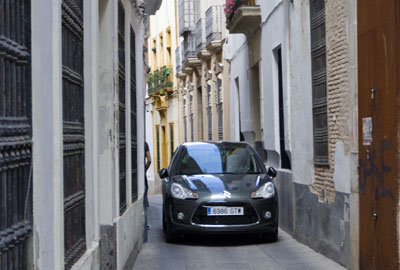 Car Rentals
Car Rentals
Renting a car can be great…
until you arrive at your destination through congested narrow streets. There are many inner city areas where cars are totally banned.

Madrid Airport Transport
You can take a taxi from the Madrid airport for a fixed price of €30, or the Metro for €3.50, About 20 minutes to Gran Via. An airport bus leaves every 15 minutes with 3 stops ending at Atocha railway station, about 40 minutes. €5. Look for the yellow line.
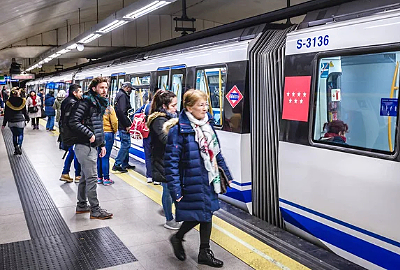
Metro Madrid
Get almost anywhere in the city quickly on the Madrid Metro for less than €3. You will seldom wait more than 5 minutes for a train.
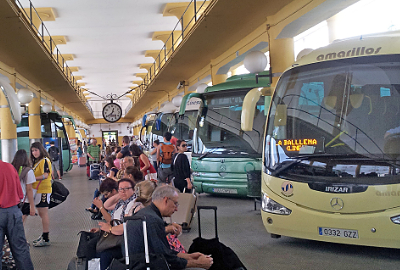
Traveling
• Just one carry on... get on and off flights quickly, take public transport. Too much baggage slows you down and if you pack carefully one bag is all you need.
• Pick up some Spanish, it helps if you're going to leave the tourist tracks.
• Try anything on the menu, tapas are usually cheap so nothing lost if you don't like it.
 A Better Trip
A Better Trip• Keep your cash and passport in a bag across your shoulder like the locals do, so it's difficult to snatched.
